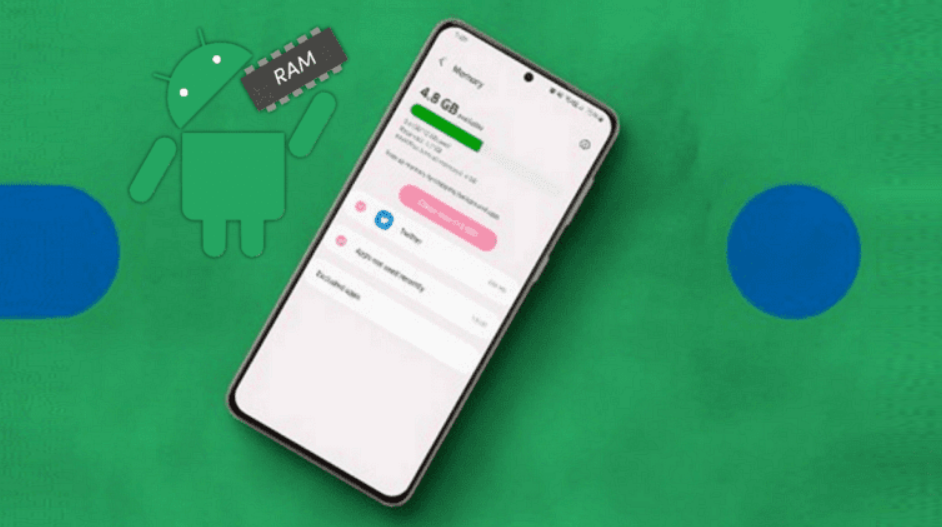The newest iPhone 13 smartphone has already been shown to have 4GB of RAM. The Android phone industry has progressed beyond 4GB of RAM. Currently, the main Android mobile market supports up to 18GB of RAM. In reality, storage expansion technology enables Android handsets to have up to 20GB of RAM or more. This is significantly more than most common desktop PCs have.

Given that thousands of people continue to buy iPhones, there seems to be an appropriate reason for that. Why is 4GB of RAM still plenty for iPhones but barely adequate for Android handsets? Smartphone lovers and followers of tech blogs will have to reply to this question. Is it because Apple is too adept at conserving resources, or because the Android OS is improperly optimized? Let’s look at the reasons briefly today.
Table of Contents
WHY IS SMALL RAM ENOUGH FOR IPHONES?
First and foremost, you must comprehend the operation of the smartphone’s memory. The memory’s job is to temporarily hold the processor’s operating info. As a result, consumers may access this data whenever they like. For instance, if the software on the smartphone is likened to a math test, the memory is like blank paper, holding the stages of the computation, and the processor is the computation formula in charge of the computation. That example, when the area of the paper is inadequate, the calculation’s effectiveness suffers. This will affect the speed with which inquiries are answered.

The iPhone doesn’t need such a large capacity, as we can readily deduce from the aforementioned example. Furthermore, the method is easier and quicker, using less paper. Otherwise, it contains an eraser that may be wiped while counting to clear up the utilized area. Of all, this is merely a rudimentary event-based logical inference. Let us look at the precise causes.
DIFFERENCES IN ECOLOGY AMONG IOS AND ANDROID SYSTEMS:
To begin with, while both the iOS and Android operating systems are result-oriented touch-screen phones, the variations in customer experience perception are also relatively small. The working mechanism of the 2 systems, however, is very dissimilar.

For instance, all Android apps must operate in the background due to Google service restrictions. This means that if you launch a 100MB application, the background RAM will be lowered by 100MB. In actuality, your Android phone application will be available to you 24 hours a day. As a result, several programs will be operating in the background. This holds regardless of whether you are currently using them. This Android version uses a lot of RAM. This means it uses a lot of storage, which is why Android devices require additional RAM.
iOS vs ANDROID
The Apple iOS system employs the background tombstone method, and information acceptance is integrated with the Apple services. There is just one interface required for all application push messages, which must first be provided to Apple’s Push Notification Service before being sent to the user. Yet, it will cause consumers to miss out on the most recent news.

Android serves as the actual operating system while iOS serves as the fictitious backdrop when an application is running in the background. On iOS, the application will suspend its operations and stop working when it is in the background. When the preceding job completes, the system will save the present app’s status. When it is necessary to continue, the application will restore the configuration before the interruption using the available records.
More apps will demand significantly more RAM with the Android model. With an expanding number of built-in applications, Android handsets require a greater number of applications. The iOS paradigm has the advantage of not requiring a lot of RAM. As a result, we can see why Apple is content with 4GB of RAM while Android has 18GB.
DIFFERENCES BETWEEN CLOSED-LOOP AND OPEN-SOURCE APP DEVELOPMENT REQUIREMENTS:

The identical application operating on Android and iOS consumes different amounts of RAM. Aside from the variation in system function, the developer’s optimization of the application also plays a role. Apple has stricter developer requirements and a more thorough review process since iOS is a closed system that only Apple can utilize. Developers want a more sophisticated optimization method to adapt to Apple’s hardware.
On the other side, Android is an open-source platform with a more flexible management structure. Application developers no longer have to be concerned with device adaption as a result. As a result, even though it is an identical application, Android consumes more RAM than iOS owing to poor optimization.
WHAT IS BETTER, LARGE OR SMALL MEMORY?
With this in mind, you should realize why Apple does not need to expand RAM. Many people may still be unsure if more or less storage is preferable. Small memory implies cheaper cost and therefore better for Apple’s iPhone. The ideal memory for consumers is that which they can utilize efficiently, whether that memory is 4GB or 18GB. As a result, the RAM amount doesn’t important for practical users. If the phone does not operate properly and effectively, it should be discarded.
Source: Gizchina
Also read about: Internet Explorer passes away at the age of 26
